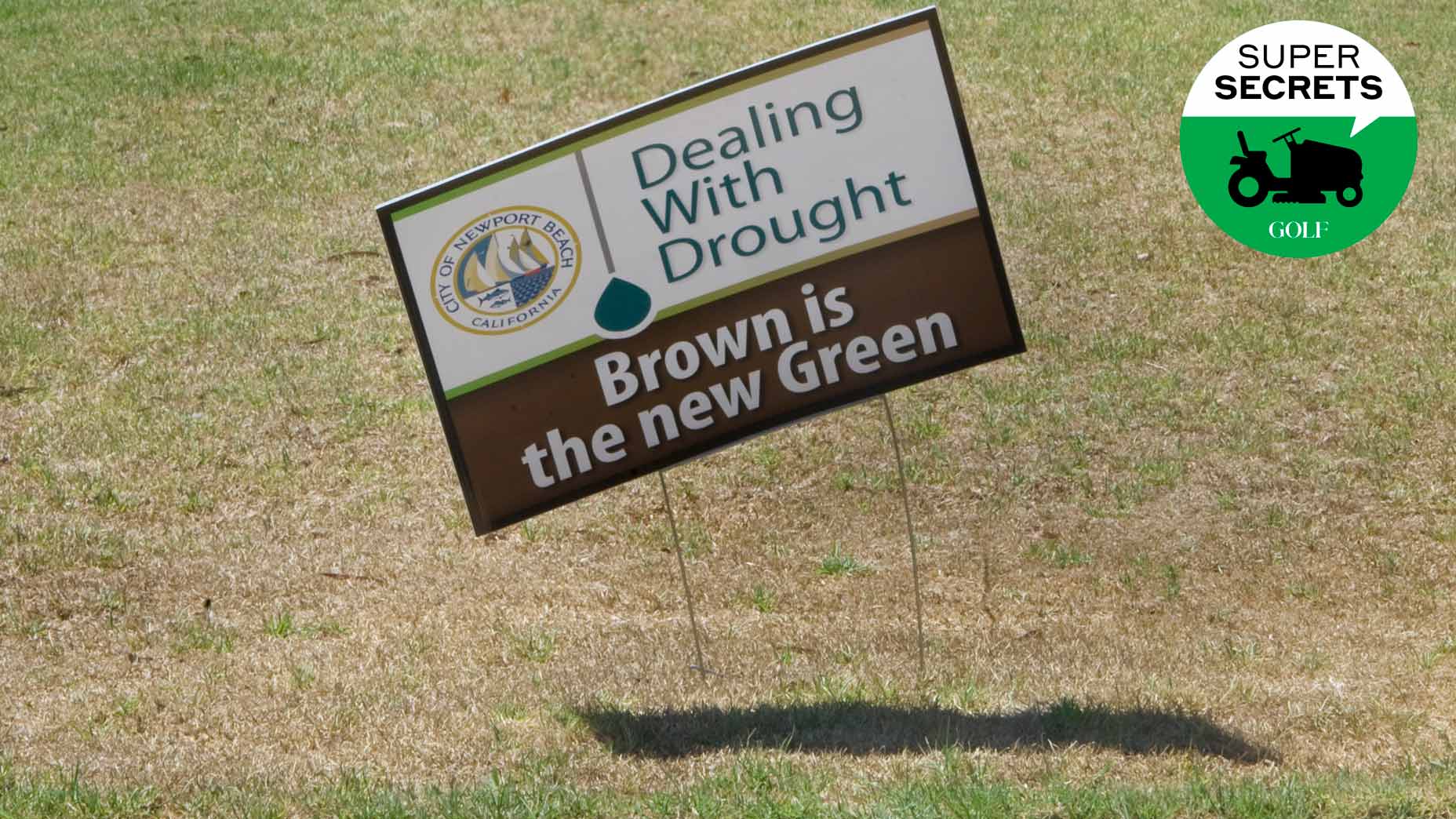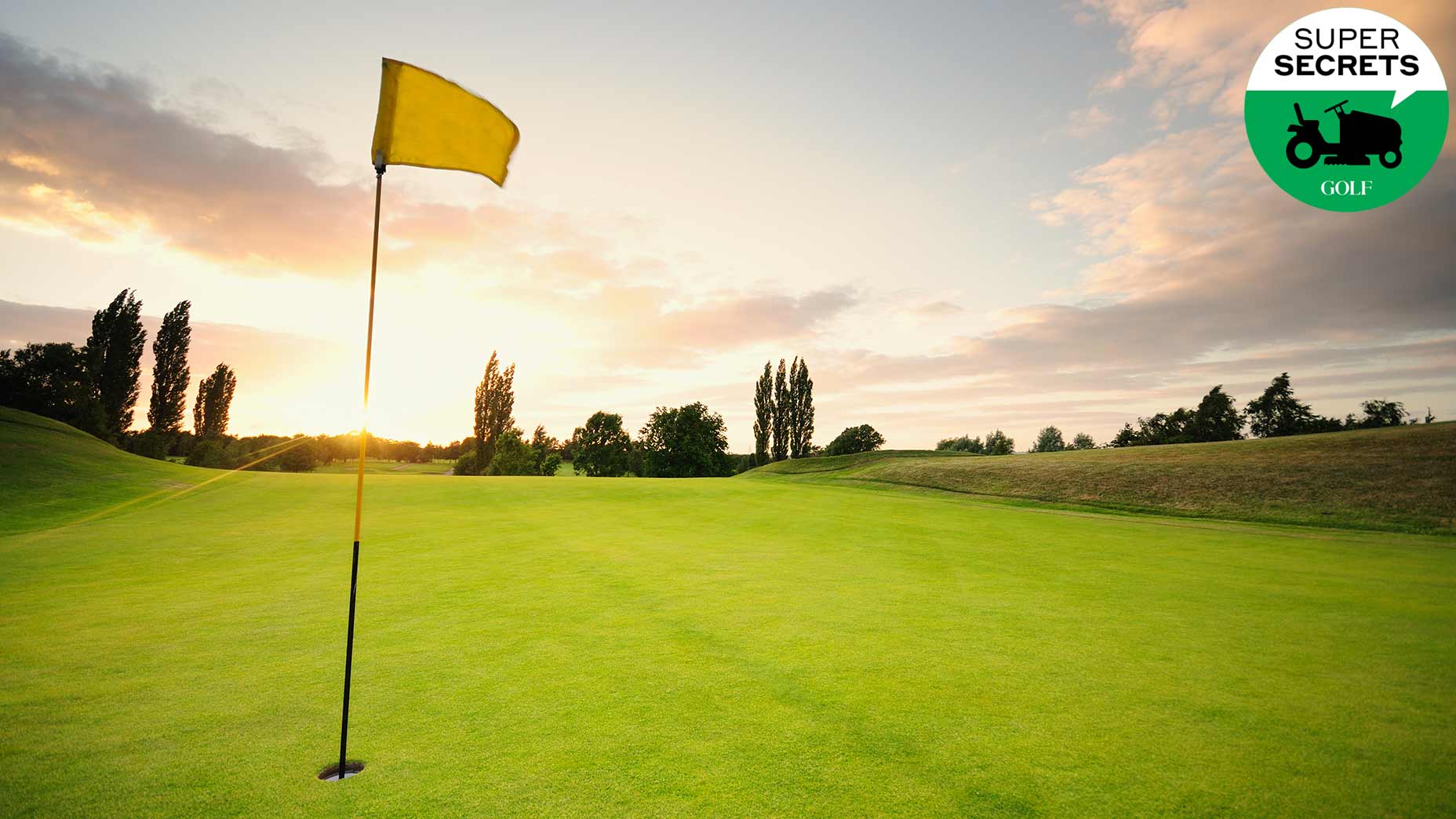Tired of lawn-maintenance? Try swapping out turf for these low-lift alternatives

In this age of drought, non-essential grass can be replaced with turf alternatives that save water.
Mindy Schauer/Digital First Media/Orange County Register via Getty Images
Welcome to Super Secrets, a GOLF.com series in which we pick the brains of the game’s leading superintendents. By illuminating how course maintenance crews ply their trades, we’re hopeful we can not only give you a deeper appreciation for the important, innovative work they do but also provide you with maintenance tips that you can apply to your own little patch of paradise. Happy gardening!
When it comes to turf, a lot us have two expectations: that our courses should look like Augusta National, and that our lawns should be vast swaths of uninterrupted green.
Superintendents have a different perspective.
They understand that less is often more.
Witness the prevalence of turf-reduction projects at golf properties from coast to coast.
Grass is nice, no doubt. But maintaining it is costly and labor-intensive. Removing it can save all kinds of resources—time, money, water, fertilizer, and more — even as it improves how a course looks and plays. Done right, it’s an economical, eco-friendly, and aesthetically pleasing move.
Dale Hahn, a certified golf course superintendent (CGCS) and a longtime member of the Golf Course Superintendents Association of America, is the director of golf course maintenance at TPC at Summerlin, in Las Vegas. Since 2003, his course has worked in phases to remove 21 acres, or 14 percent, of its irrigated turf, yielding a cumulative savings of 29 million gallons of water per year.
We asked Hahn what it takes to tear out turf, which materials work best as substitutes, and whether he had tips for those of us looking to remove grass at home.
Turf Removal 101
On the course, the standard multi-step practice is to spray the turf with herbicide; mow what remains as low as possible; till it or tear it up; and then plant into the area or blanket it with ground cover. At home, Hahn recommends using a sod cutter, a walk-behind machine with a vibrating action that peels up the turf as it goes. Sod cutters can be rented from many home-improvement stores
Which Turf Should Be Removed
Non-essential turf, though ‘non-essential’ is open to interpretation. One useful definition, Hahn says, is “the stuff that you don’t walk on.” Steep slopes, for instance, or windy decorative swatches that get little foot traffic and are also tricky to maintain. In some areas around Las Vegas, ‘non-essential’ turf includes those grassy stretches between the street and sidewalk, and a newly passed law calls for their removal by 2027. Turf-related regulations vary by jurisdiction. Before you embark on a turf-removal project, it’s worth looking into government-rebate programs. They can serve as good incentives to complete the job.
What to Plant Instead
As with course design, it doesn’t hurt to let nature be your guide. Hahn has found inspiration by walking into the Nevada desert and taking note of the plants: indigo, brittle bush, Mormon tea, and on. Wherever you live, you can strive for something similar. Take a hike and take a survey, then do your best to mimic the natural surrounds.
Choosing Ground Cover
Here, again, choices abound, and vary from one region to the next. Around Las Vegas, courses often use ‘rock mulch,’ the natural top layer of the local desert. Rock mulch, Hahn says, is filled with microorganisms, which create a crusty shield that help keep down dust.
Pea gravel is another go-to. It’s composed of 3/8-inch rocks that get packed down over time, creating a smooth playing surface for errant shots. But rocks of other sizes are available, too. In the northeast and northwest, bark chips and mulch are often used, while pine straw is popular in Florida, Georgia and across the Carolinas. Such materials blend beautifully with their surroundings and layered properly, they help retain moisture in the soil.
Mixing It Up
Beauty might be in the eye of the beholder. But, Hahn says, the best-looking xeriscapes (landscapes that require little irrigation) are built on variety. In the desert, that might mean three different types of hardscapes (3/4-inch rock, along with 12- and 24-inch boulders) and three different plantings, ranging from small succulents to medium shrubs and trees. “If you drive around your neighborhood and look for the ugliest landscapes, they’re usually the ones that are the most homogenous,” Hahn says. “You want to vary the sizes, colors and textures as much as you can.”










